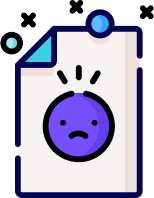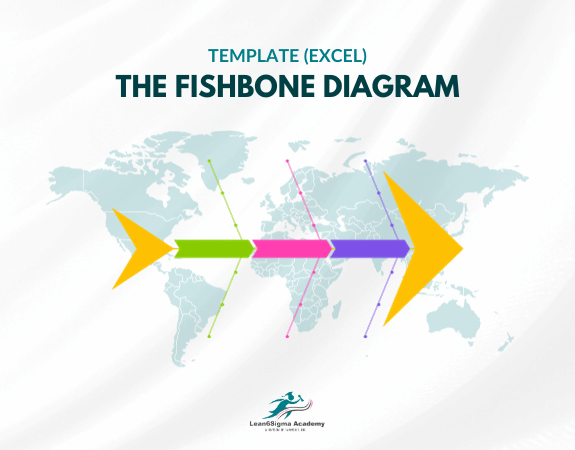The Fishbone Diagram Template
Cause-and-Effect Diagram
Identify patterns easily
Find the root causes as a team!
Ishikawa
Find potential causes to your problems
Promote communication
The Fishbone Diagram Template typically includes the following components:
Problem Statement: At the head of the diagram, the problem or issue that needs to be addressed is stated clearly and concisely. This serves as the central focus of the diagram.
Fishbone Structure: The central spine, resembling the backbone of a fish, extends horizontally from the problem statement.
Categories of Causes: Branches, resembling the ribs of a fish, extend diagonally from the spine. Each branch represents a broad category or major factor that may contribute to the problem. Common categories include:
People: Factors related to individuals, their skills, attitudes, and behaviors.
Process: Aspects of the process or workflow that could be contributing to the problem.
Equipment: Issues related to machinery, tools, technology, or physical resources.
Materials: Problems associated with the materials, supplies, or resources used in the process.
Environment: Factors related to the work environment, facilities, or external conditions.
Measurement: Problems linked to the measurement, data collection, or monitoring methods.
Subcategories and Causes: Beneath each major category branch, sub-branches are drawn to represent specific subcategories or causes related to that category. Each subcategory can have multiple causes associated with it.
Cause Analysis: Lines or arrows are drawn from each subcategory to identify and describe the specific causes or factors that contribute to the problem. These causes are typically written as brief statements or descriptions.
Data and Evidence: Space may be provided on the diagram to document data, evidence, or observations that support the identification of each cause.
Team Collaboration: A Fishbone Diagram is often created collaboratively with a cross-functional team, as it encourages diverse perspectives and contributions from team members with different expertise.
The Fishbone Diagram is a valuable tool for problem-solving and root cause analysis because it helps teams:
Systematically explore potential causes and contributors to a problem.
Organize and categorize causes to identify patterns and relationships.
Prioritize and focus on the most significant and influential root causes.
Promote communication and collaboration among team members.
Fishbone Diagram Templates can be created using various software tools, drawing programs, this one is in Microsoft Excel format - no specialized software needed!
They are commonly used in quality improvement initiatives, process optimization, and continuous improvement efforts to address complex problems and drive solutions effectively.

0 Reviews
Riaan is a dynamic leader, coach, facilitator, Lean Six Sigma Master Black Belt with over 20 years of hands-on experience driving business results. Riaan is highly skilled and has worked across diverse industries internationally. With a degree in Chemical Engineering, Riaan started in the major breweries and bakeries in South Africa and was so dedicated to his work that he was often known to take his work home with him.
